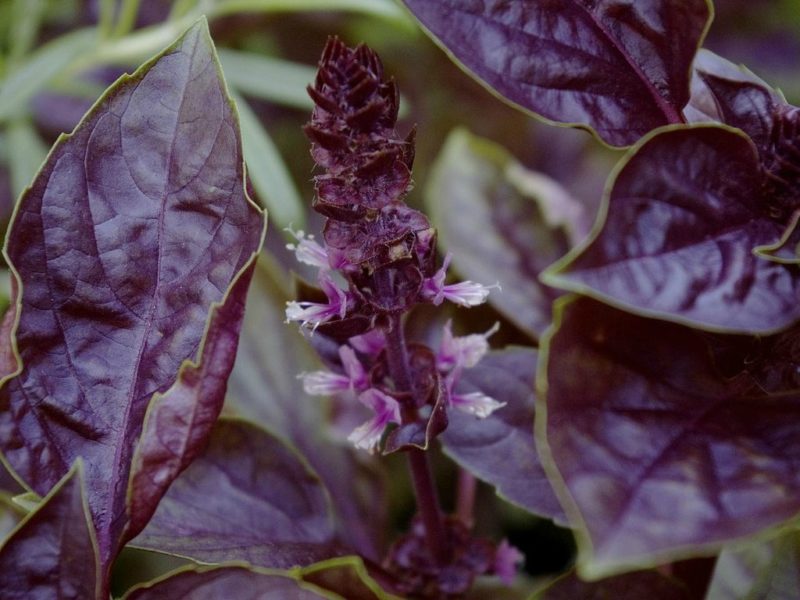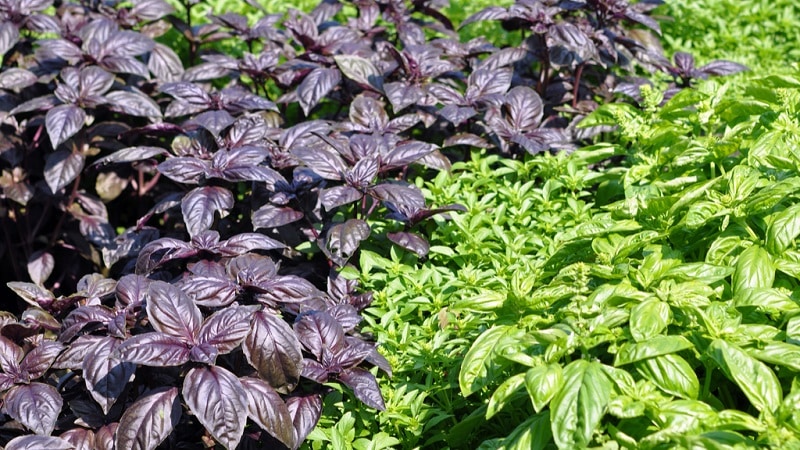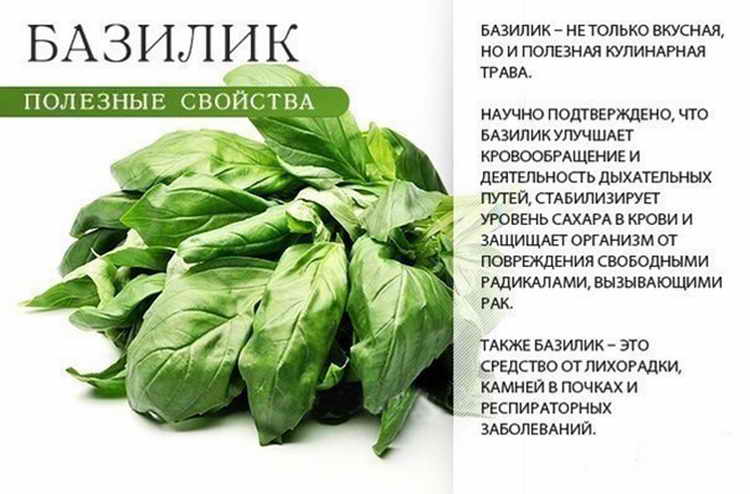What does basil look like and what are its characteristics?
Common basil (fragrant) is an aromatic herb, without which it is impossible to imagine Caucasian and Italian cuisine. But this plant is famous not only for its culinary properties. Thanks to its antispasmodic, expectorant, antiseptic and tonic properties, it has established itself as a universal medicine in folk medicine. You will learn everything about basil from our article.
What does common basil look like: description
Basil is a relatively low (up to 80 cm) subshrub with oval green or purple leaves.
Reference. Leaf basil is considered to be native to South Asia, where it is called tulsi (Hindi).
How basil blooms
Basil blooms from July to September.
During this period, the plant blooms two-lipped flowers: pale pink, pale purple or white. They grow from the axils of the leaves located at the base.
The photo shows a basil flower.

Description of leaves
The petiole is short, the shape of the leaves resembles slightly elongated eggs. They are bright green in color, but are sometimes dark purple. This occurs as a result of harmless mutations in the plant.
When crushed, the leaves release a strong spicy aroma.
What are the roots of basil?
The root is branching and looks like a bunch. It is located almost at the surface of the earth: it is located in the arable layer.
Plant characteristics
Common basil is a plant from 30 to 60 cm in height. Its stem is straight, has a 4-sided structure and begins to branch before flowering.
Reference. The entire plant (its upper part) is covered with small hairs that feel rough to the touch.
In early September, instead of flowers, the shrub produces fruits. They are black or dark brown, consist of 4 nuts, which contain the seeds of the plant. Small in size: the weight of a thousand pieces is from 0.5 to 0.8 g.
The seeds retain their properties for 4-5 years, after which they become unsuitable for planting.
Types of Basil
There are about 70 species of this plant in the wild.
They differ in appearance: the size and color of the leaves, their shape. Some species have corrugated leaves.
By color
Based on color, this shrub is most often divided into 2 types: green and purple.. In this case, they only count several varieties, which have only one color. The rest have many shades - from dark purple (almost black) to silver.

Green
Sometimes it is also called sweet basil. This species has light green leaves, sometimes with slight pubescence. Height green species reaches 35-45 cm. The smell varies depending on the variety. Due to their delicate aroma, they are used in preparing dishes from different countries (France, Italy).
The most popular varieties include Explosion, Cinnamon Aroma, Tone, Green Cornflower, Favorite, Citric.
Violet
Purple basil is an annual plant that gets its name from the color of its leaves. This species grows up to 50 cm. It has a pungent aroma. Due to its spicy smell, it is added to Asian and Caucasian dishes.
The most fragrant varieties include Zastolny, Purpurny, Moskvoretsky and Mavritansky.
According to plant height
Basil is also divided into types according to the height of the stem.It is this characteristic that becomes decisive when choosing a variety for planting. If space is limited, choose low-growing varieties.
short
Low-growing varieties of basil include plants whose stems reach a length of no more than 30 cm. These types are suitable for year-round use. growing and at home. They are easy to care for, grow quickly and produce a good harvest.
Popular varieties are Stella, Gnome, Velvet, Basilisk.
Medium height
Medium-height varieties include those that have reached a height of 58 cm. These are universal plants that are often grown on an industrial scale.
Among these varieties are Smuglyanka, Vostorg, Ararat, Karakum.
High
The tallest species of this herb include plants with stem lengths from 61 to 82 cm. They are capricious in care: even protecting against pests becomes a difficult job.
Famous varieties are Crimean Violet, Pearl of the Moscow Region, Fantaser.
Properties of basil

Basil is not just a fragrant herb that adds a piquant aroma to dishes. She is also famous for her beneficial properties: contains vitamins B, A, ascorbic acid, phytoncides and rutin. The leaves of the plant contain essential oil (up to 2%), which contains camphor, estragole, saponin and cineole, which are beneficial for the human body.
Thanks to its chemical properties, the shrub has a positive effect on almost all organs. It strengthens the immune system, prevents viral and colds.
The plant also improves the functioning of the gastrointestinal tract. The oils that make up basil have antibacterial properties and fight E. coli, staphylococcus, salmonella, and suppress the activity of Giardia and Trichomonas. The plant enhances the effect of antibiotics.
Also, this spicy herb relieves the symptoms of asthma and bronchitis, eliminates spasms, and suppresses cough. The plant has fat-burning properties due to the enzymes it contains. The possibility of creating a medicine for obesity and diabetes based on it is being considered.
Important! Regular use of basil increases potency.
Due to its unique combination of beneficial substances, basil also helps fight stress of any nature:
- Psychological. It has antidepressant properties, reduces anxiety and improves memory.
- Physical. Helps to relax after exhausting physical activity.
- Metabolic. Normalizes the level of lipids and glucose in the blood, normalizes blood pressure.
- Chemical. Protects the body from the effects of heavy metals.
Application of the plant
Basil is grown not only for cooking, but also as a medicinal herb. Tinctures from the stems of green varieties relieve toothache and menstrual pain. Mixtures of leaves are used in folk medicine to treat stomatitis and dermatitis.
Reference. During the war, camphor alcohol was made from the leaves of this aromatic plant, which was used as an antiseptic.
In cosmetology, basil is used as a base for hair care products (stops hair loss) and skin care (prevents the appearance of wrinkles).
It is impossible to imagine world cuisine without this herb. The spice has spread to all continents and won the love of gourmets of all nationalities:
- the British add it to cottage cheese and stews;
- the French - in soups and sauces;
- Italians sprinkle seasoning on fish and pasta;
- The peoples of the Caucasus cannot imagine a single dish without this spice.
Conclusion
Basil in the garden is not only a fragrant seasoning, but also a useful herb. During the times of Ancient Rome, only noble people could enjoy its magical taste. Now this plant is available to everyone, thanks to which it has become one of the most popular in the world.